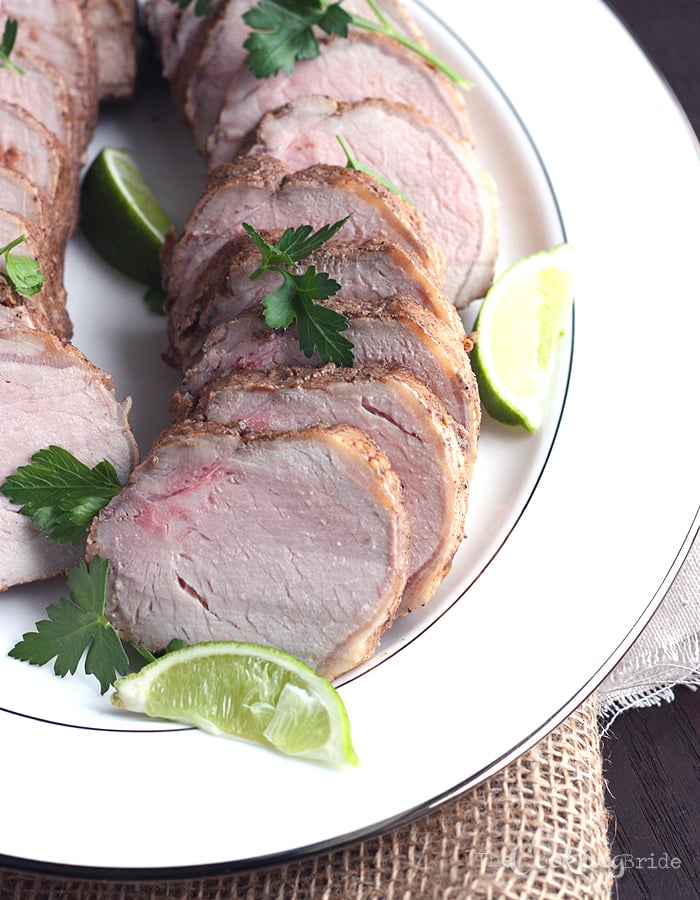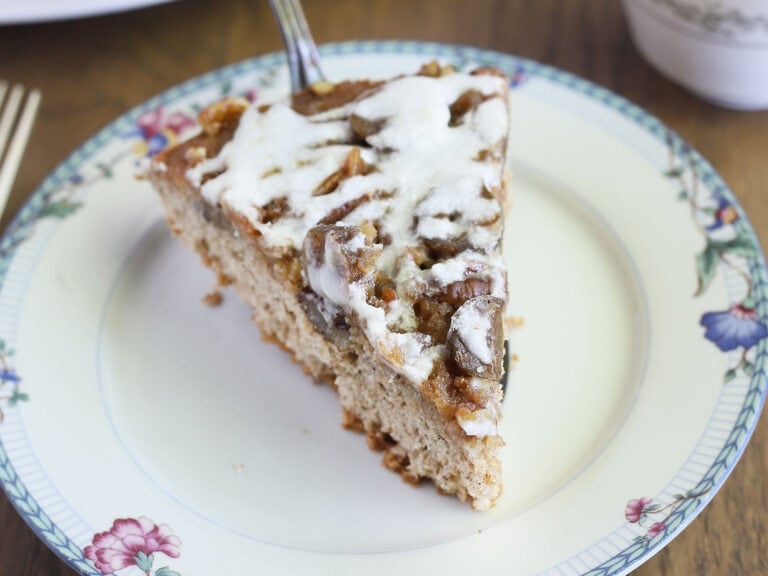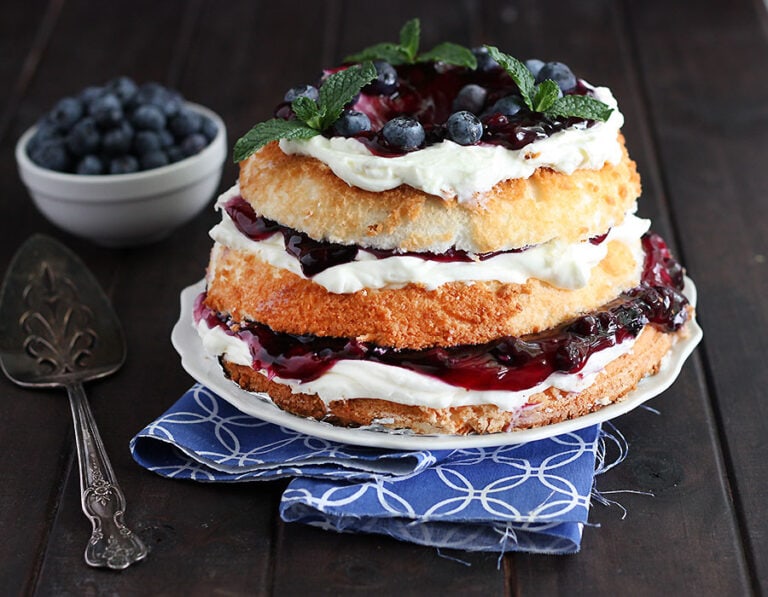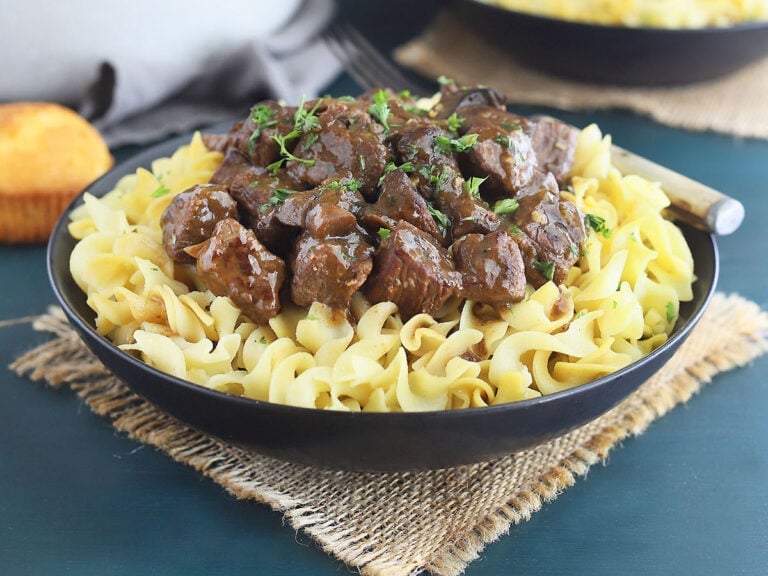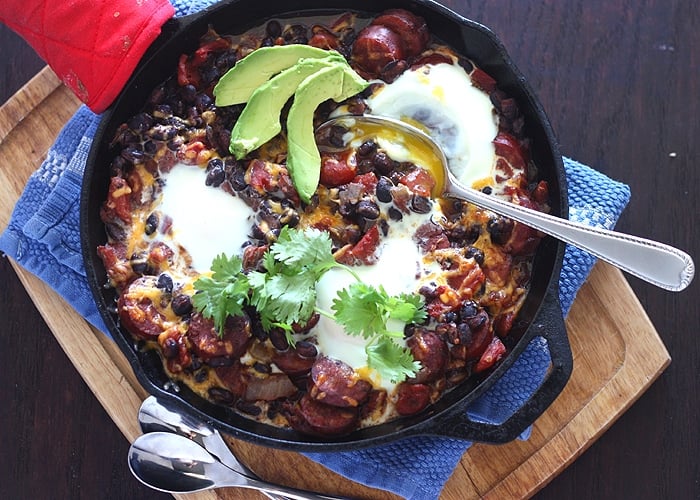Jamaican Jerk Pork Tenderloin
Escape to the Caribbean with this delicious jerk marinade for pork tenderloin or chicken. Seasonings and hot Scotch Bonnet pepper give this marinade heat.
There are a few recipes in my arsenal that are constantly evolving. Jamaican jerk happens to be one of them. My husband and I visited Jamaica on our honeymoon and three years later we still talk about this amazing jerk chicken we bought at a road side stand. Cooked on an open spit in a thatch roofed tiki hut, it was served on a paper plate with no utensils. You didn’t need them. The chicken literally fell off the bone and was meant to be eaten with the fingers.
Let’s Talk about the Scotch Bonnet Pepper
Scotch Bonnet peppers are prevalent in Caribbean cooking. They are closely related to the habanero, so if you have trouble locating a Scotch Bonnet, you can always substitute one for the other. I find it’s hit or miss at my grocery store. Don’t let its diminutive appearance fool you. These little jokers are HOT. Just to give you a reference point Scotch Bonnet Peppers are up to 140 times hotter and a jalapeno pepper on the Scoville index.
Capsaicin is what gives a pepper its heat. Most of that is concentrated in the rib, or the white inner part of the pepper. Remove that to cut down on some of the heat, but be sure to wear gloves while doing it. Oils from the pepper can rub off on your fingers. Even after washing your hands, trace amounts can get left behind. It really sucks when you accidentally rub your eye or scratch your nose. If you prefer less heat, sub the Scotch Bonnet for a jalapeno or leave the pepper out entirely.
How to Make the Jerk Marinade
In a small mixing bowl, combine allspice, sugar, salt, garlic powder, chili powder, ground cloves, thyme, ground black pepper, cayenne pepper and cinnamon. Whew! You got all that? I know, it’s a long list.
In a separate bowl, combine olive oil, soy sauce, white vinegar, freshly squeezed lime juice, chopped green onions and a seeded and chopped Scotch Bonnet pepper, if using. Whisk the wet ingredients in with the spices. Set 3/4 cup of the marinade aside. I like to marinate in big resealable plastic bags. Pour it in, add your pork tenderloin. Squish it all around to get it coated, then marinate for at least one hour.
Fire up the grill for medium heat. Remove the pork tenderloin from the bag and throw away the marinade left behind. Grill for about 45 minutes to one hour, turning halfway through. You also want to baste with the reserved marinade about every 15 minutes. Once the tenderloin has reached an internal temperature of 150 degrees, remove it from the grill and let it rest for 15 minutes.
If you don’t have a grill, you can also roast this in a 400 degree oven, also until it has reached an internal temperature of 150 degrees, about 15-20 minutes.
I don’t just limit this recipe to pork. I tried it last week on grilled chicken and it was very tasty!
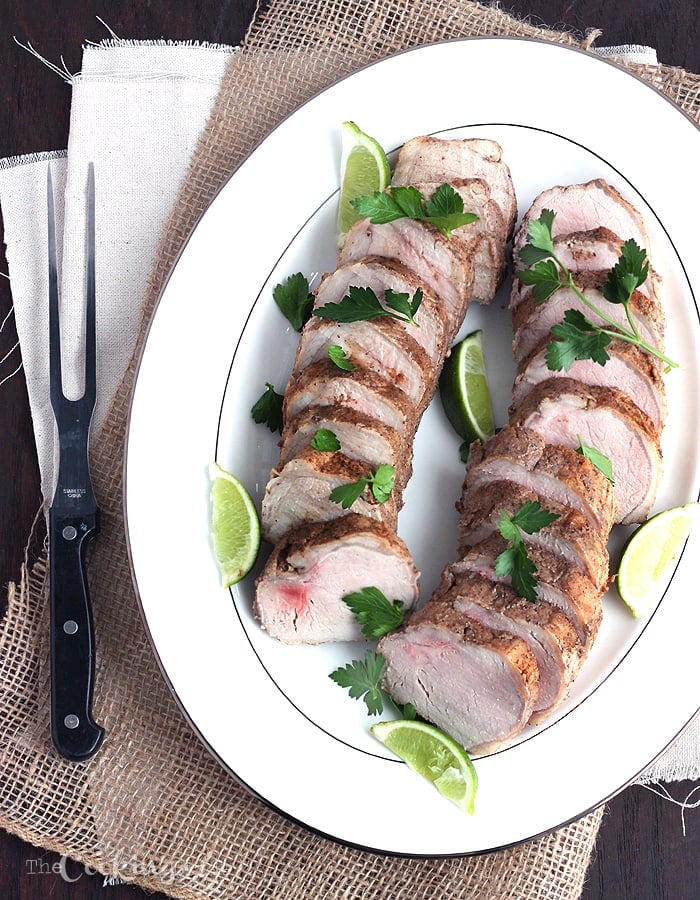
Jamaican Jerk Pork Loin
Ingredients
- 3/4 tsp. allspice
- 1 tbsp. and 3/4 tsp. salt
- 2-1/2 tsp. garlic powder
- 1-3/4 tsp. white sugar
- 1/2 tsp. chili powder
- 1/4 tsp. ground cloves
- 1/8 tsp. dried thyme
- 1 tsp. ground black pepper
- 1-3/4 tsp. cayenne pepper
- 1/2 tsp. ground cinnamon
- 1/4 cup olive oil
- 1/4 cup soy sauce
- 3/4 cup white vinegar
- 1/4 cup lime juice
- 3 green onions chopped
- 1 Scotch Bonnet pepper seeded and chopped
- 2 pork tenderloins
Instructions
- In a medium bowl, combine first ten ingredients.
- In a separate bowl, combine oil, soy sauce, vinegar, juice, green onions and the pepper.
- Add wet ingredients to dry ingredients and whisk until dry ingredients are well incorporated. Reserve 3/4 cup of marinade.
- Pour remaining marinade into a large resealable plastic bag. Add pork to bag. Marinate pork for a minimum of one hour.
- Remove pork from bag and discard marinade. Grill over medium hot coals for approximately 45 minutes to 1 hour, turning halfway through cooking time, until juices run clear.
- Baste pork with reserved marinade.
- Alternatively, roast the pork tenderloin in a 400 degree oven for 15-20 minutes, turning halfway through cooking time, until a meat thermometer registers 140-145 degrees.


